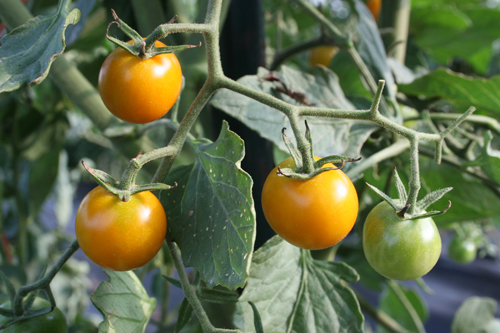Few things in the garden seem to cause as much joy, heartbreak or anxiety as the fate of the summer’s backyard tomato harvest.
“I get a lot of questions about vegetables,” said Bob Westerfield, University of Georgia Cooperative Extension consumer horticulturalist. “But I’d say that 80 percent of those questions center around tomatoes. It’s definitely the most popular vegetable in the state of Georgia and probably across the nation.”
Westerfield believes that gardeners often judge their gardens on the strength of their tomatoes because of the stark difference between good and ho-hum tomatoes.
“There’s a huge difference between a tomato that comes out of the store and a tomato that comes out of the garden,” he said. “With other vegetables, like a yellow squash, the difference might not be as obvious, but the taste of any tomato you get at a large supermarket is just not the same as if you grab one out of the garden.”
As more and more first time gardeners start to till their gardens, he and other agents have seen an uptick in tomato questions.
However, it’s not just newbie gardeners who fret over their tomato plants. Over the past two summers experienced gardeners have had trouble coping with the heat, drought and disease that seem to plague home garden tomato patches, said Bill Tyson, UGA Extension coordinator for Effingham County.
Westerfield and Tyson have a few tips for gardeners who are hoping that this will be the year they’ll finally get a taste of that red gold from their own gardens.
If you haven’t planted your tomatoes yet:
- It’s not too late to plant them for summer harvest. In fact planting before mid-April, when the soil temperature reaches 60 or 65 degrees, can cause a condition called leaf curl that can keep tomato plants from reaching their full potential.
- If you’re planting in the ground, lay down a 4-inch layer of new organic matter and incorporate it into your garden soil before you plant.
- Plant your tomatoes deep. Remove the leaves from the bottom half of the plant’s stem and bury about two-thirds of the stem. For a 15-inch tall transplant, this means that a whole 8 inches should be below ground. "Everywhere that stem hits the soil it’s going to grow roots and that will give you a hardier plant that’s more securely anchored in the ground,” Westerfield said.
- Try to get your soil pH between 6 and 6.5 to protect against blossom end rot. If you or your neighbors have had problems with tomato spotted wilt virus in the past, ask your garden center about varieties that are marked TSWV resistant, Tyson said.
If you have planted your tomatoes already:
- Don’t over water them. Tomatoes will let you know when they’re thirsty with slightly cupped, drooped leaves, Westerfield said.
- However, don’t deprive your plants of water and then flood the soil to make up for your neglect. “If people would water consistently and evenly, when the plant needs it, it would probably solve 50 percent of the problems,” Westerfield said.
- Make sure that most of the water goes onto the soil below the leaves. Damp leaves can be a breeding ground for disease.
- Gardeners shouldn’t go overboard with fertilizer. Tomatoes need fertilization when they’re first planted, but they don’t need any extra feeding until their first tomatoes are about the size of a dime.
- If you start seeing signs of blossom end rot on your fruit — a water soaked spot at the bottom the of the tomato — you can treat the plant with calcium chloride to try and cure the condition, Tyson said.
- Your local Extension agent has ways to combat additional issues, but the key is to identify and address the problem quickly, Tyson said.
“Until you identify the problem it’s hard to come up with a solution,” he said. - Georgia gardeners can find their local Extension agent by calling 1-800-ASK-UGA1








